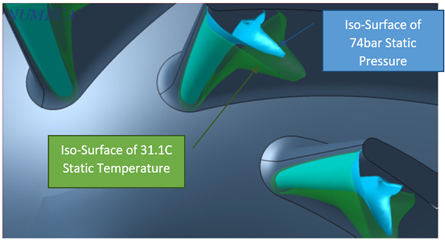The contemporary gas turbine engine, developed in the 1940’s by Sir Frank Whittle (pictured), is  still considered to be among the most efficient, external combustion engines. Today, there is a resurgent interest in power generation technology driven by humankind’s insatiable need for more power. A popular focus is to extend the Brayton Cycle, the thermodynamic basis for a gas turbine engine, to using CO2 in a closed Brayton Cycle. This is commonly referred to as a Supercritical CO2 (sCO2) system. As the name implies, the CO2 is at pressures above the critical point of CO2 or 1,070 psia. The highest pressure in the cycle can often be designed to be 4 times this pressure and operate at temperatures as high as 700°C at the inlet to the turbine.
still considered to be among the most efficient, external combustion engines. Today, there is a resurgent interest in power generation technology driven by humankind’s insatiable need for more power. A popular focus is to extend the Brayton Cycle, the thermodynamic basis for a gas turbine engine, to using CO2 in a closed Brayton Cycle. This is commonly referred to as a Supercritical CO2 (sCO2) system. As the name implies, the CO2 is at pressures above the critical point of CO2 or 1,070 psia. The highest pressure in the cycle can often be designed to be 4 times this pressure and operate at temperatures as high as 700°C at the inlet to the turbine.
The principle benefit for the sCO2 cycle system is the high efficiency reached at high operating temperatures, which is usually achieved with nuclear power or concentrated solar heat energy sources. CO2 as the working fluid enables the utility-size power outputs of 150 to 500 MWe. sCO2 systems also claim a very large power density for the compressor-turbine power generation module that make them an order of magnitude smaller in size, as opposed to a comparable size steam turbine in contemporary power systems.
There is one drawback, and that is the need to have very large recuperator heat exchangers to enable the high-cycle efficiencies. Recuperator effectiveness above 96% is not uncommon, but results in very large heat exchangers. These heat exchangers must also operate at high temperature and high pressure which adds significant cost to the system. These two operating parameters set the pace of the further development of the sCO2 cycle.
It might be prudent to re-evaluate the potential of improving the thermodynamic efficiency of the cycle by concentrating on improving the efficiency of the compressor and turbine. It is interesting to note that even in the early stages of developing gas turbine engines, it was the ability to machine to very high tolerances the very efficient aero designs of the turbines and compressors that enabled the gas turbine to produce net power. Making changes to the turbomachinery efficiencies would reduce the need to increase the recuperator effectiveness and thus keep the heat exchanger sizes in a realm of practicality. A thermodynamic parametric analysis can demonstrate that even a 1- 2% increase in the compressor and turbine efficiency can improve the cycle efficiency by the same proportion. However, at an effectiveness that is above 95%, a 1-2% improvement in cycle efficiency would require a 12-15% increase in the size of the recuperator with a consequential increase in component cost.
How can you achieve this type of increase in efficiency? The subtle but significant change in efficiency improvement can be achieved by once again utilizing improvements in aero design via CFD analysis as well as the ability to actually machine blades to almost any shape and curvature. Combine this with software code that uses results for validated testing from easily produced prototype impellers using 5-axis machining and Additive Manufacturing technology and you get advanced turbine and compressor designs without compromising the compactness and modularity of the compressor-turbine pair. Working with an experienced, reliable company well-versed in the industry will result in the best chance for success.
Concepts NREC works with clients every day to design and analyze the types of turbomachinery required for an efficient sCO2 system. Our Agile Engineering Design System® software modules covers the entire design process from preliminary sizing through final design, with full fluid dynamics, mechanical stress, and vibration analysis. The results of the analysis are immediately validated, using our enormous database of turbine and compressor performance tests gathered over the past 60 years. To find out more contact us.



 still
still

